It’s now the weekend after, so I’m a little late, but I figured I’d post an update with the fun stuff I did over my long weekend for the Chuseok holiday!
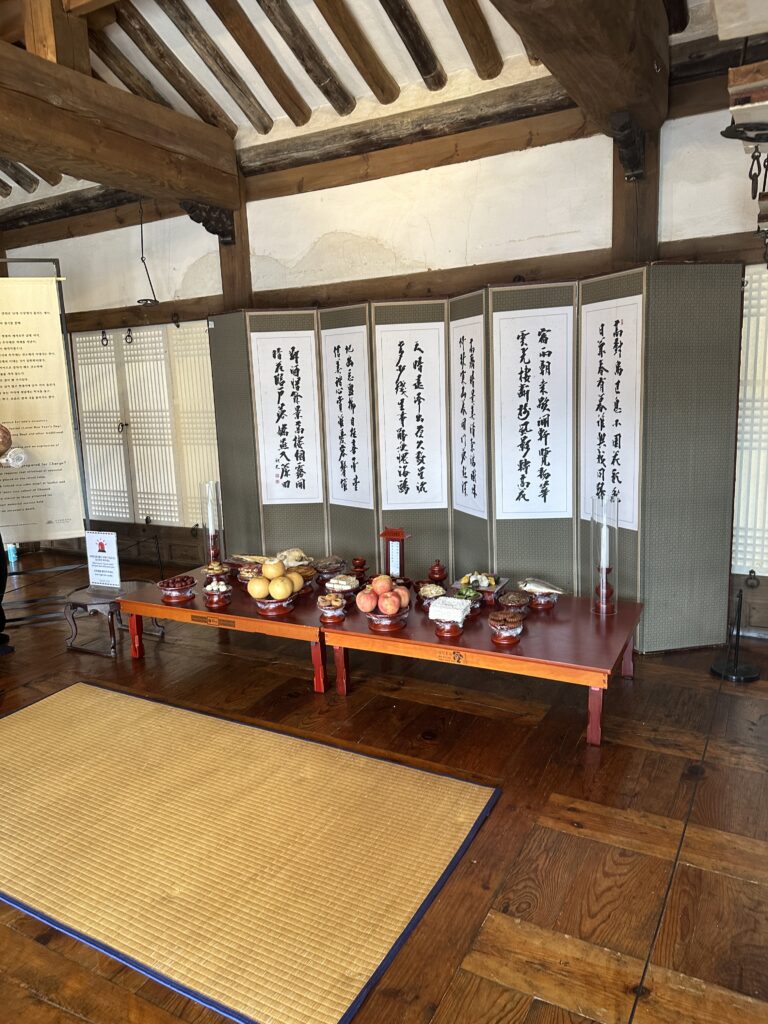
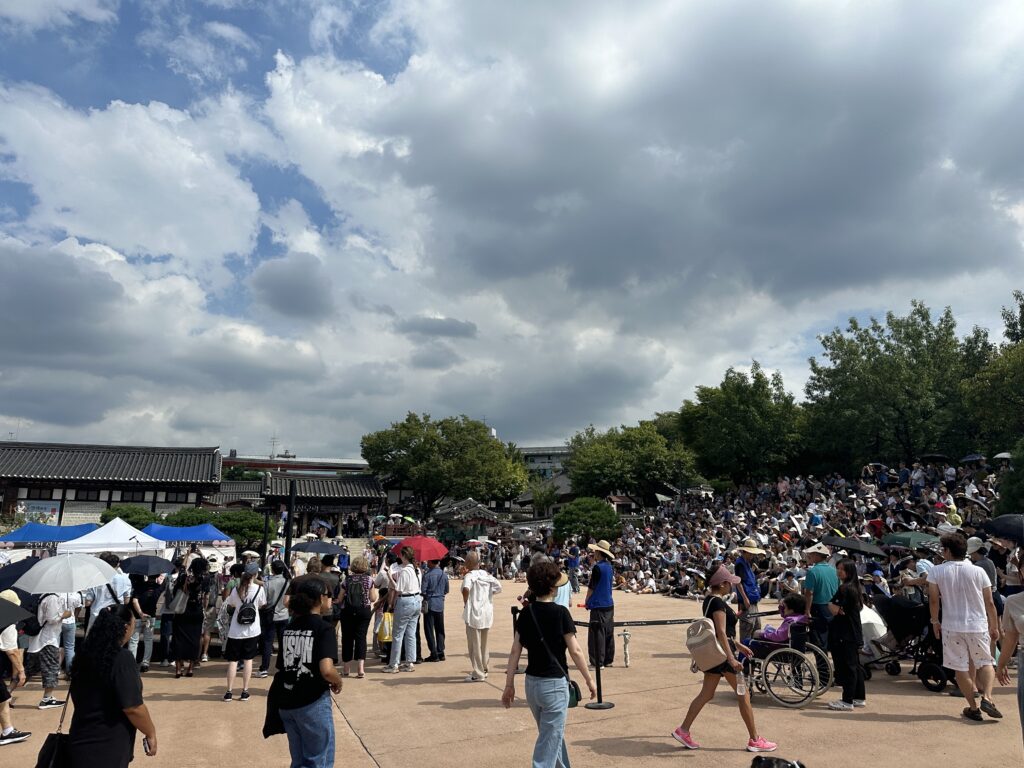
For those unfamiliar, Chuseok is often referred to as “Korean Thanksgiving” when explaining it to Americans, but it’s definitely an oversimplification. The only real similarities are that both Thanksgiving and Chuseok are holidays originally meant to celebrate bountiful harvests and involve a large family meal, but overall Chuseok has many more customs attached to it and is far more focused on the ‘harvest’ (although how true that is in a much less agricultural Korean society is something I don’t really know).
Chuseok falls on the full moon of the 8th month of the lunar calendar, meaning it is Korea’s version of the mid-autumn festivals that are commonly observed throughout East Asia. To celebrate, it is common to wear hanbok (Korean traditional clothing), venerate ancestors with a table of food offerings known as charye (see the left picture above), eat foods like songpyeon (rice cakes steamed on pine needles and filled with nuts and spices), and play traditional games like yutnori or juldarigi/tug-of-war. There are also traditional dances associated with Chuseok, like ganggangsullae (a dance performed by women to encourage fertility) and talchum (a mask dance). If you want to learn more about the holiday’s traditional customs, this website is a resource from the National Folk Museum of Korea about the holiday!
I’m definitely not the best person to be explaining these traditions, especially since I didn’t take part in most of them this year 😅 But while most of the city of Seoul is closed on the Chuseok holiday, the traditional villages and palaces are open for visitors, so thats what my roommate and I did on the last two days of our five-day weekend!
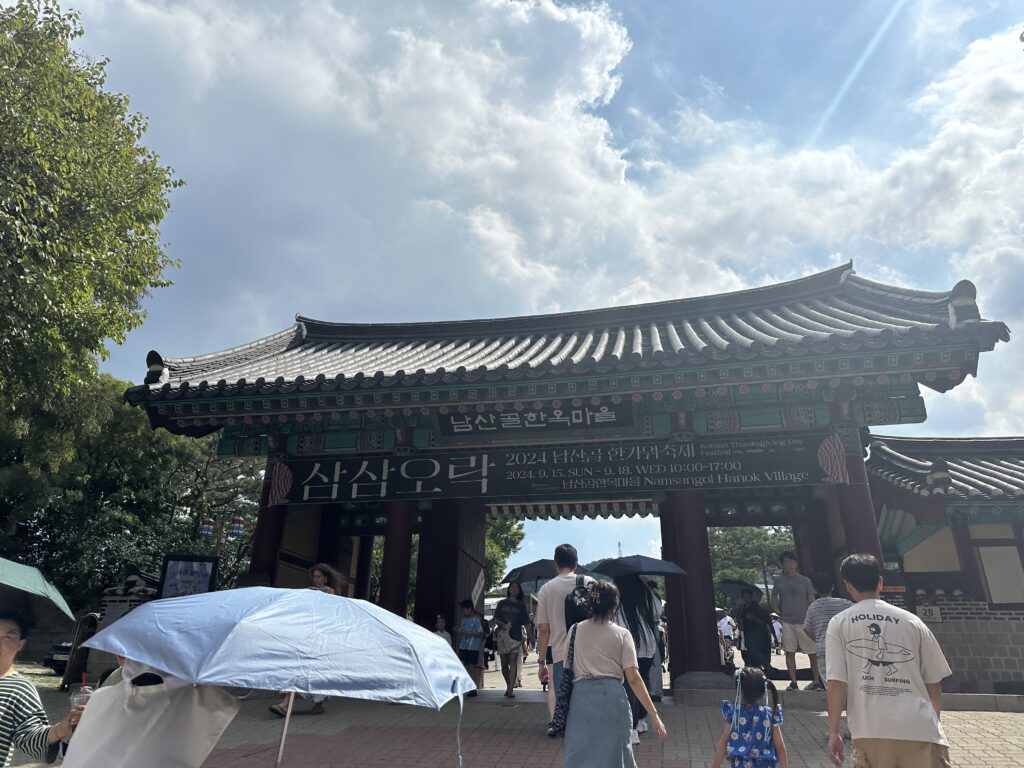
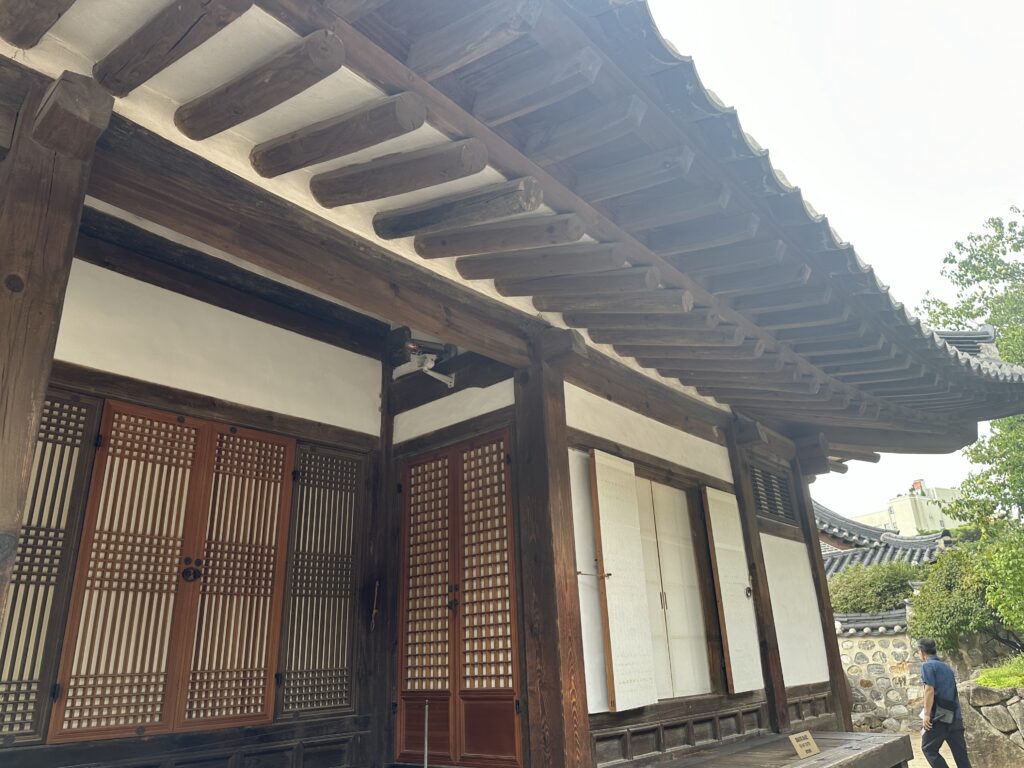
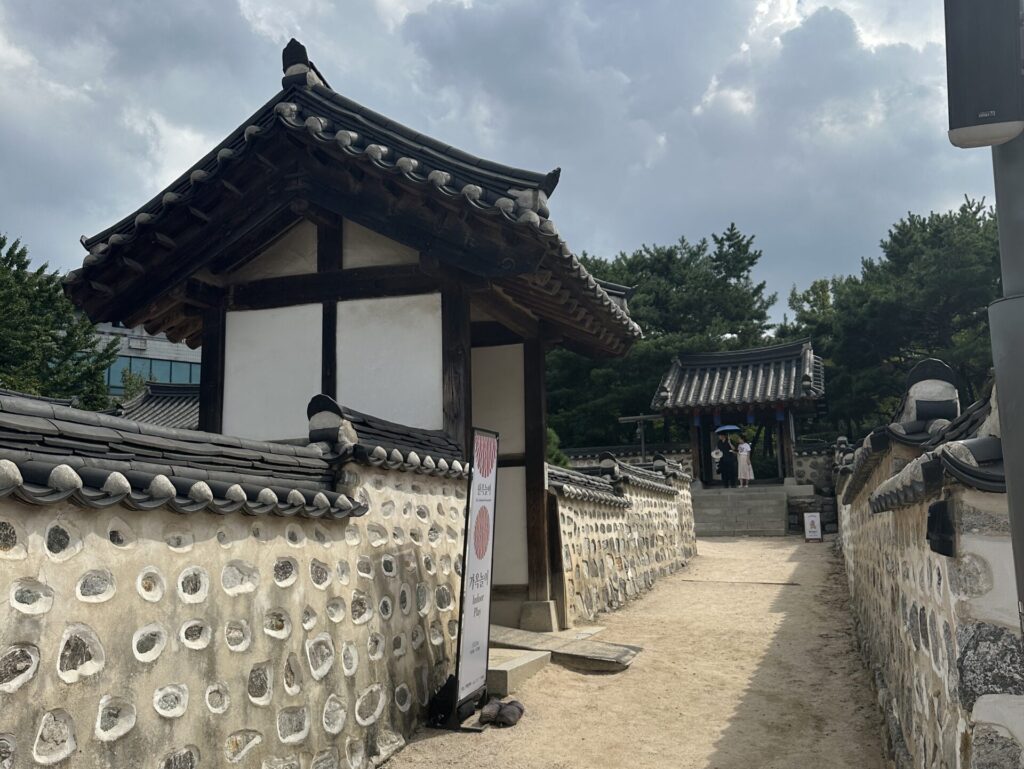
Our first day out was on Tuesday, which was the day of the full moon and thus celebrations were in full swing. We went to Namsangol Hanok Village, a traditional-style village by Namsan Tower, which was hosting various traditional performances and activities for the holiday. The village is different from other hanok villages I’ve been to like Bukchon, which was much more of a neighborhood with residences and shops, whereas Namsangol seemed to be a small set of buildings that had been the homes of wealthy generals and literati and such – kind of like it was once a gated community. There was a large center area where performances were held, and the surrounding buildings held the activities.
The event was super crowded, as you can see in the video, and it was incredibly hot and humid out, so we often found ourselves getting water and sitting in some of the houses that had fans. However, my roommate and I did 2 activities (as many were sold out): straw crafts and hanbok wearing! We got to choose our jackets (jeogori in Korean!) and skirts, and the ladies who were running the activity did our hair and gave us accessories as well. Then we had an hour to take photos in our hanboks in all the hanok village homes and scenery! We had a lot of fun posing, even though we were definitely super sweaty from the amount of layers, and it was honestly one of the highlights of the weekend. The women who helped us with our hanboks were so kind, and there was a little scene in the house set up specifically for photos with a folding screen, a book written in hanja, and brushes… it was a lot of fun!
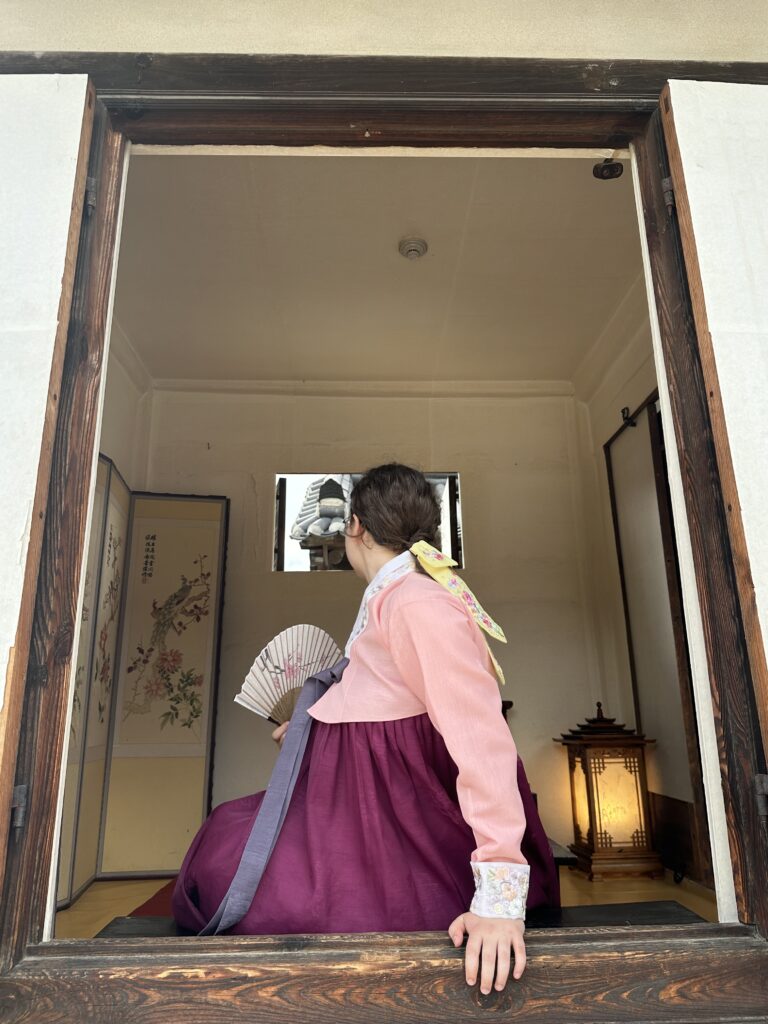
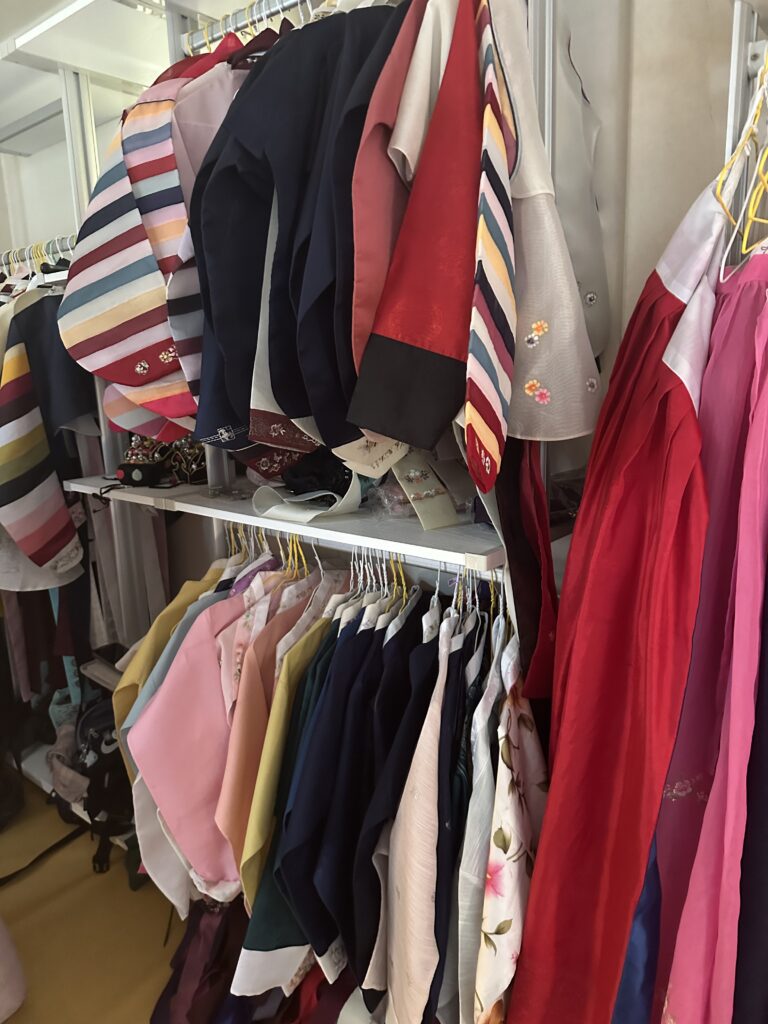
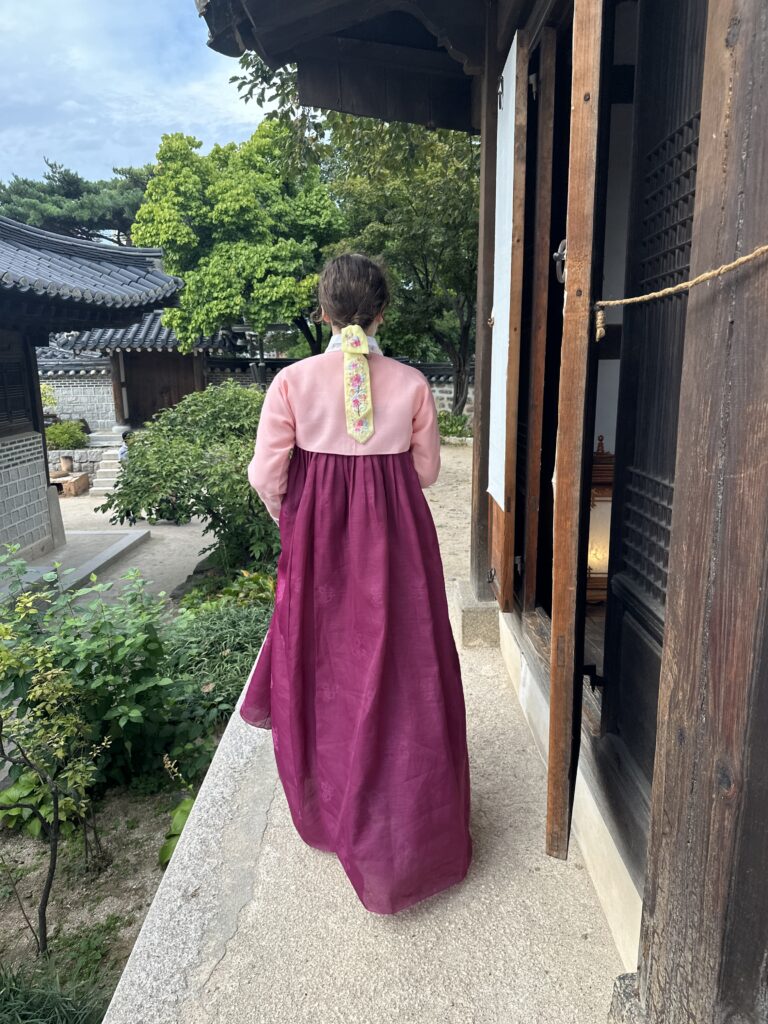
We also went to a straw craft activity, which was full of lots of little kids… and then us 😭 We made some mini brooms out of straw, which involved wetting a small bundle of straw with water, rolling it up around a bamboo stick, folding and tying it up, and then combing it out so that the bristles would be smooth. The woman helping us was very sweet, and though she only spoke to us in Korean we were able to understand her easily! I didn’t really think about it before, but it makes sense that these straw crafts would be done after the harvest as a way to use up the inedible parts of the grains that had been harvested. Even though we felt a bit silly doing crafts with a bunch of young kids, I personally really love arts and crafts, so I liked getting to make a little object I could bring home with me to remind me of the day.
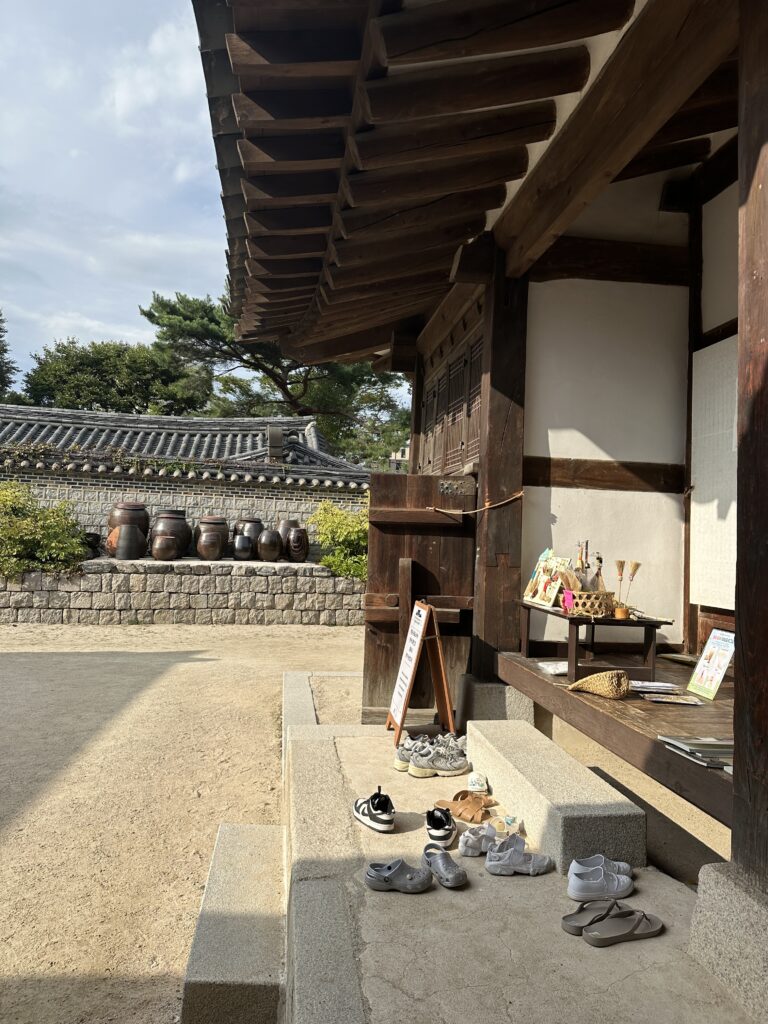
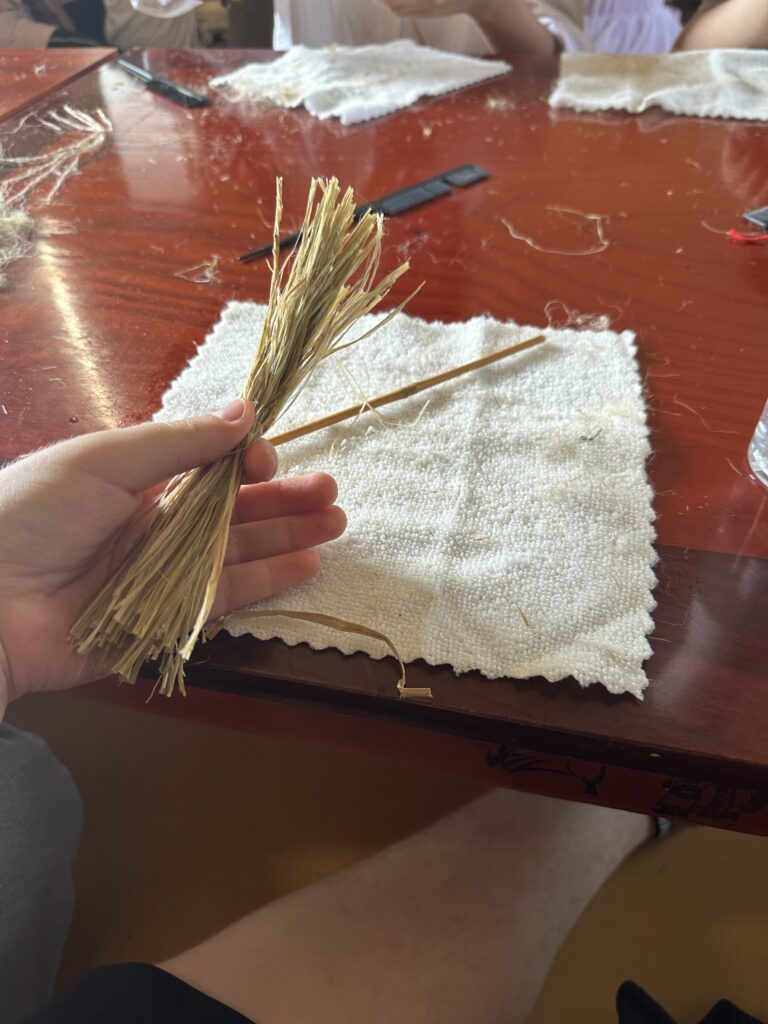
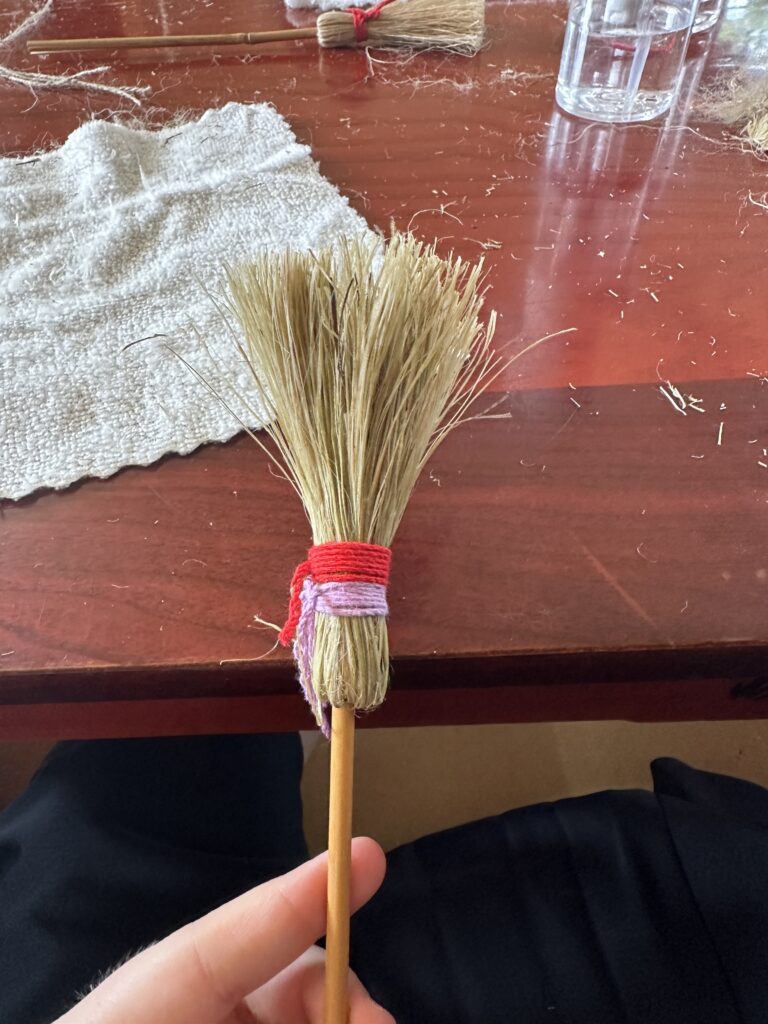
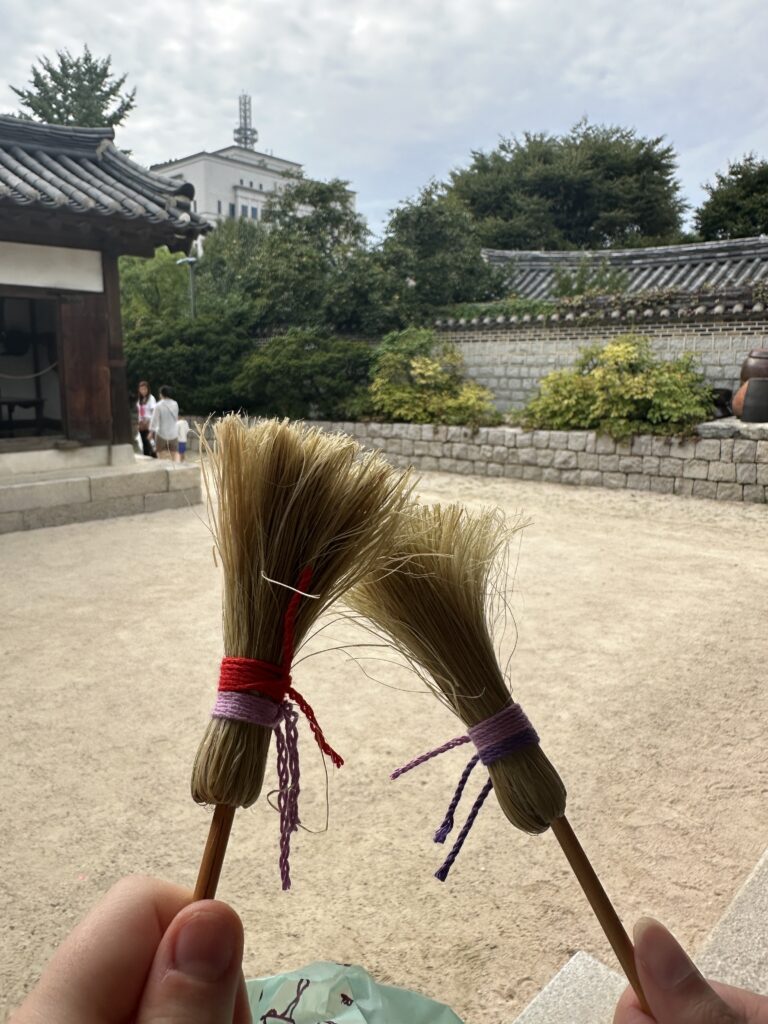
On Wednesday, we visited Gyeongbokgung, the largest palace in the city! Since we had so much fun taking photos in hanbok the day before, we decided to do it again at Gyeongbokgung. The place we rented them at was a well-oiled machine, although admittedly a bit understaffed, but we splurged a bit for some fancier patterned jeogori and skirt options. They didn’t have free hair accessories like the activity at Namsangol the day before, but we still got our hair braided for free. If you enter a palace in Seoul wearing a hanbok, you get in for free, so we once again got to experience the immersion of being in traditional clothing around all of the traditional architecture!
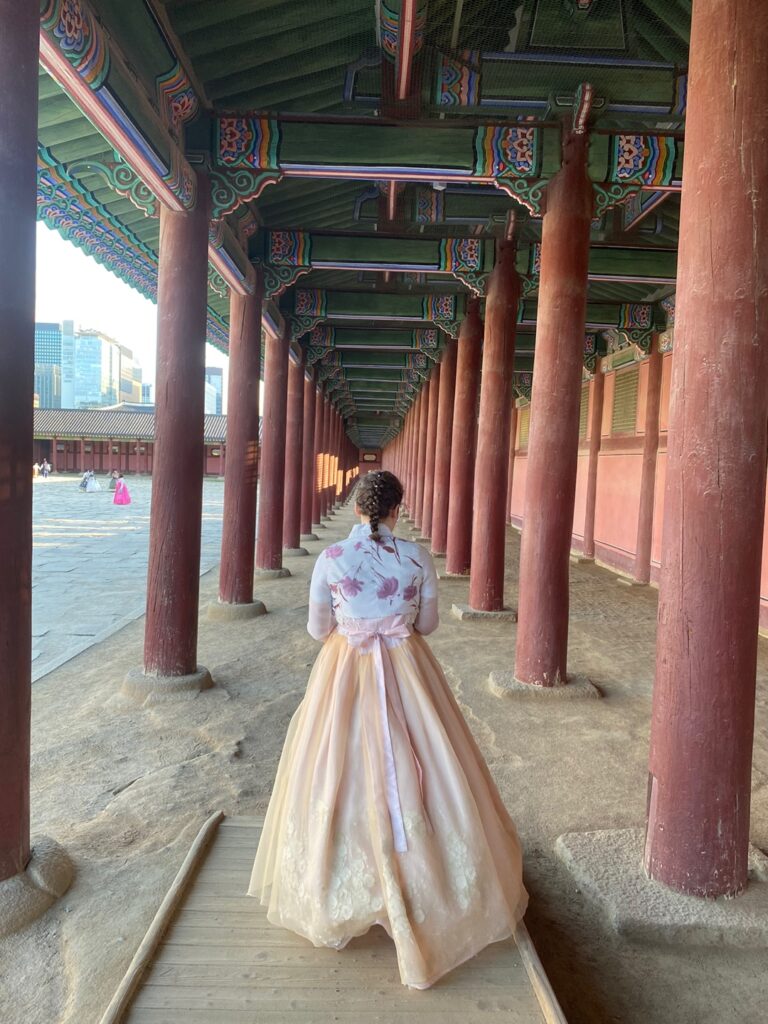
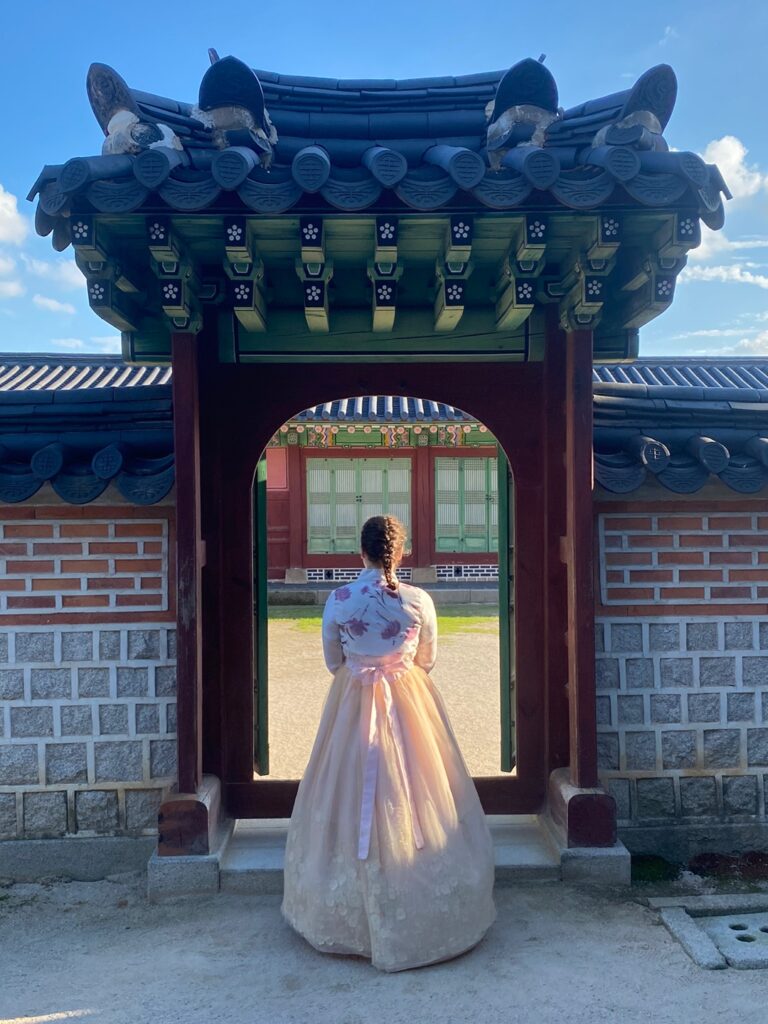
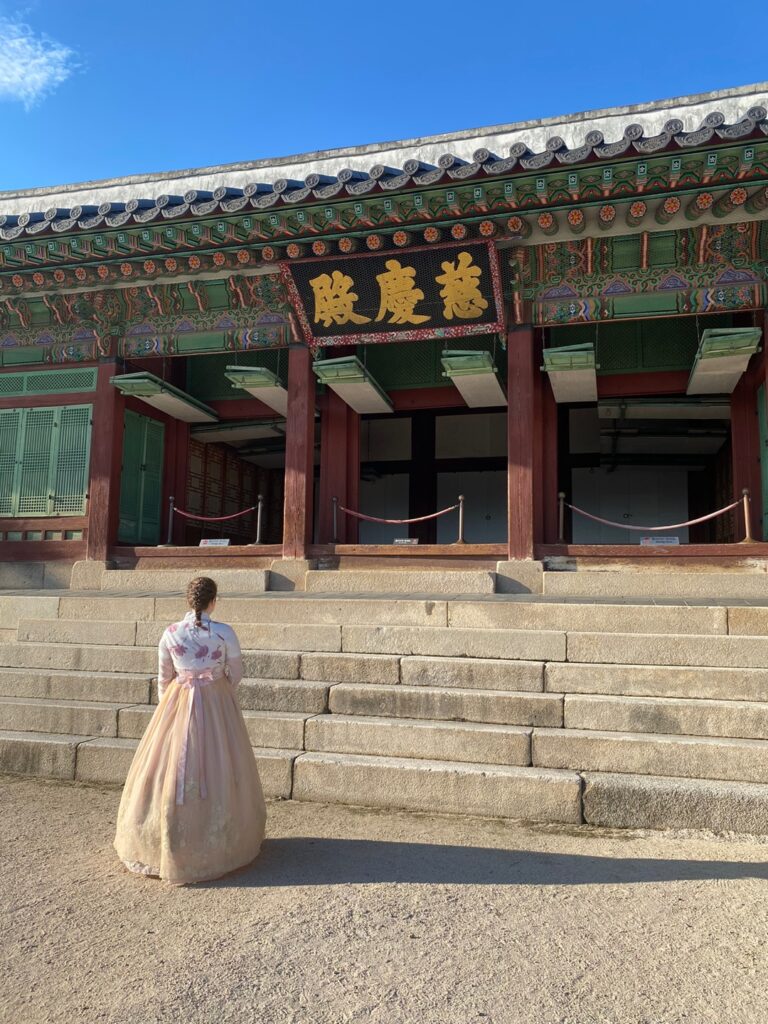

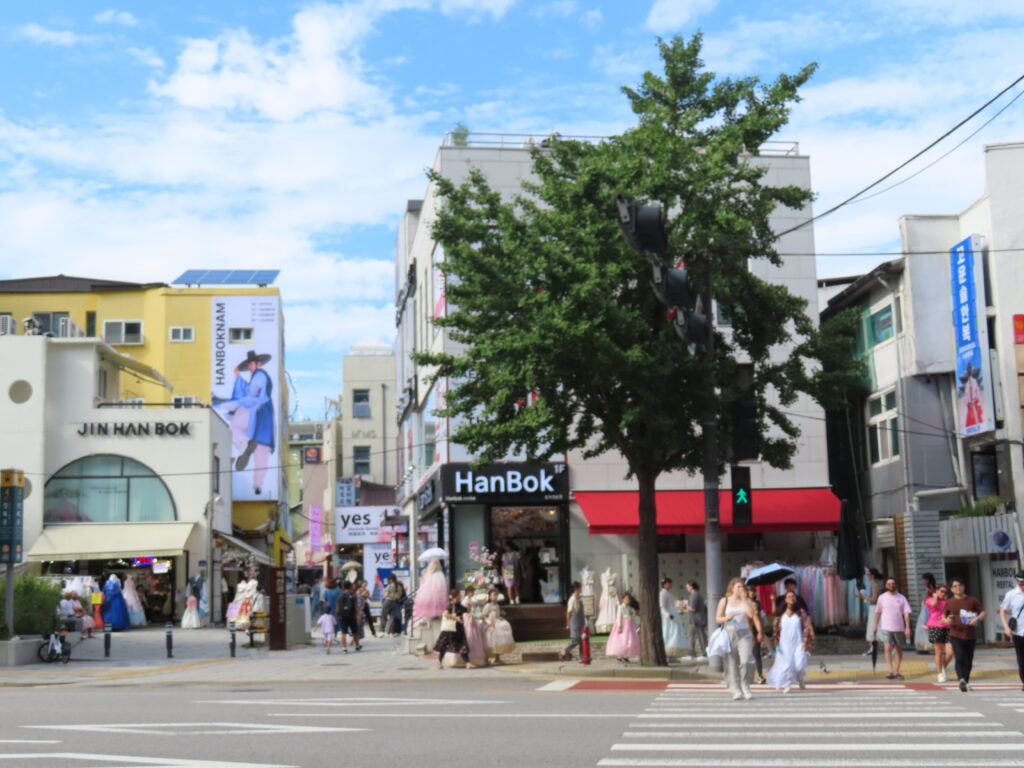
While the buildings were still with the traditional architecture, one thing we learned was that these buildings were not actually the ones standing during the Joseon period of Korea (the dynasty that ruled from 1392 to 1910). During the 1592-1598 Japanese invasions of Korea, Gyeongbokgung was destroyed by invading Japanese troops, and while it had been the main residence of the royal family before, it was left derelict after its destruction and the main Joseon palace became the nearby Changdeokgung. In the 1860s conservation efforts were realized and much of the palace was restored, but it was once again destroyed during the Japanese occupation from 1910 to 1945. Current rebuilding efforts are still ongoing and began in the 1990s.
I wasn’t too surprised by the destruction of the palace once I’d read it, but it definitely puts into context how Gyeongbokgung is much more of a cultural landmark than a historical one. Walking around at the palace, you aren’t really looking at the palace as it stood centuries ago, but it still remains a huge symbol of Korean heritage in South Korea.
After we returned our hanboks, we walked around the neighborhood (Seochon – another hanok/traditional village in Seoul) and had kalguksu for dinner and ice cream for dessert! The ice cream place was really cute – it was in a traditional building, and the flavors were a lot of fun. I got a butterscotch and banana pudding combo… needless to say it was amazing.
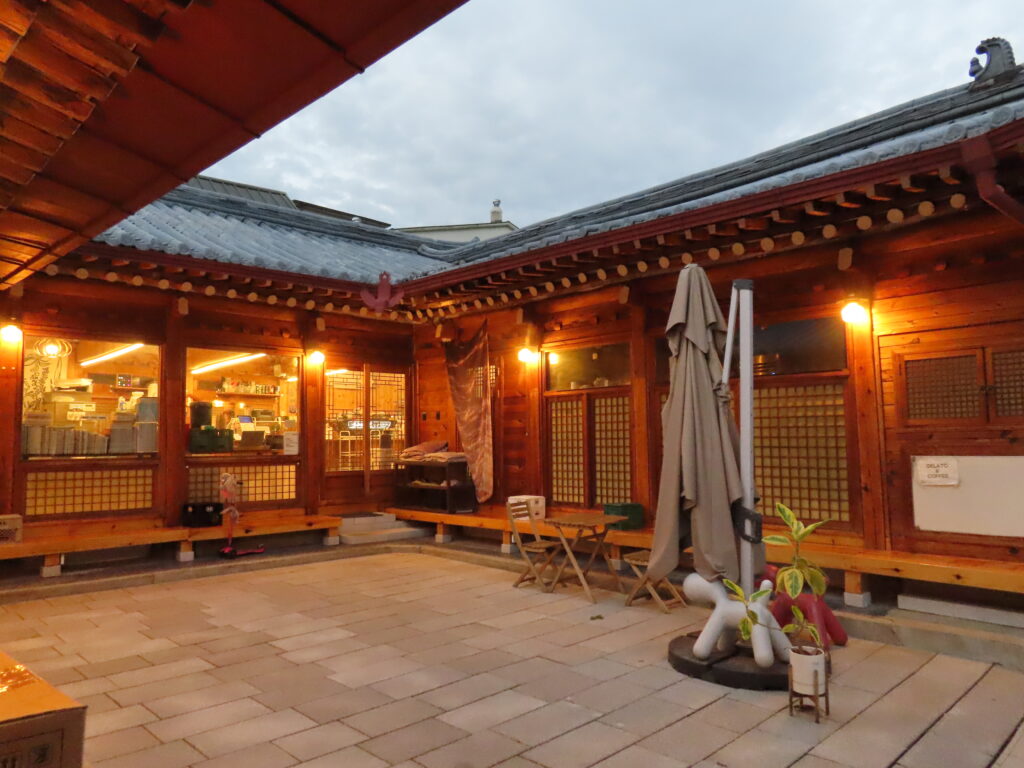
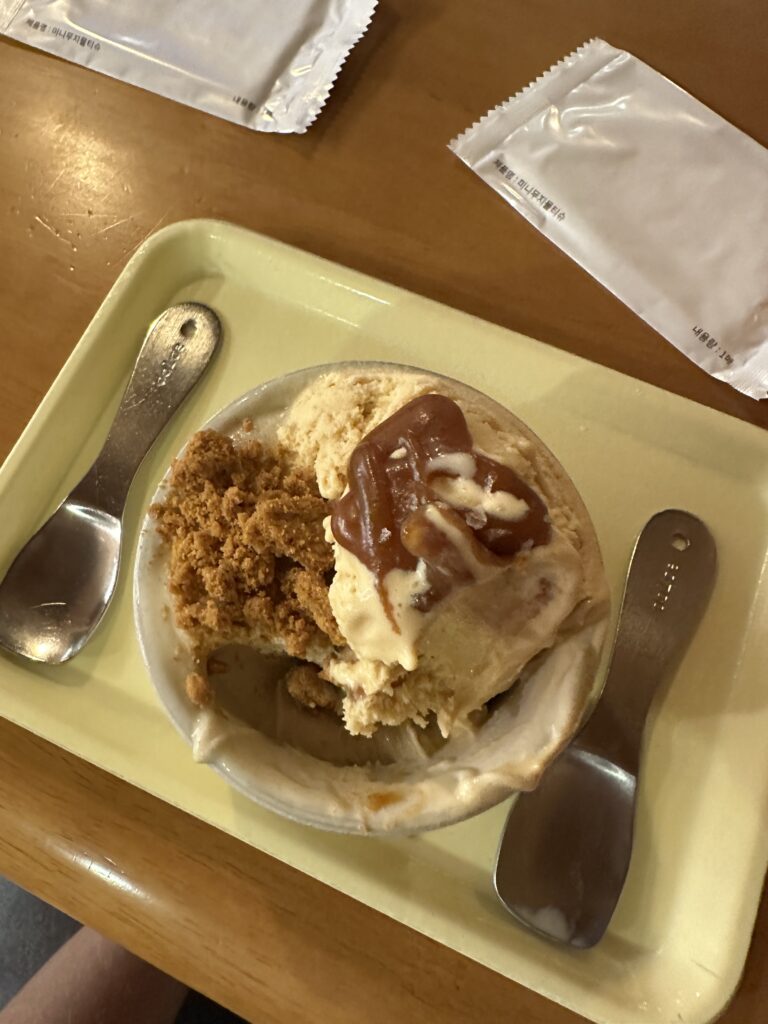
Overall, our Chuseok sightseeing was a lot of fun! For people who end up in Seoul in the fall with no other festivities to celebrate, I would definitely recommend going to some of these events and landmarks. It was a really great opportunity to learn more about the holiday, as well as Korean history in general.
In other news, I’m looking forward to having a normal week next week. Hopefully now that the Chuseok break is over I can really settle into a routine here. Also, thanks to everyone who read my last blog post and let me know you enjoyed it! It means a lot and hopefully you enjoyed hearing about my holiday weekend as well 🙂
See you next time!
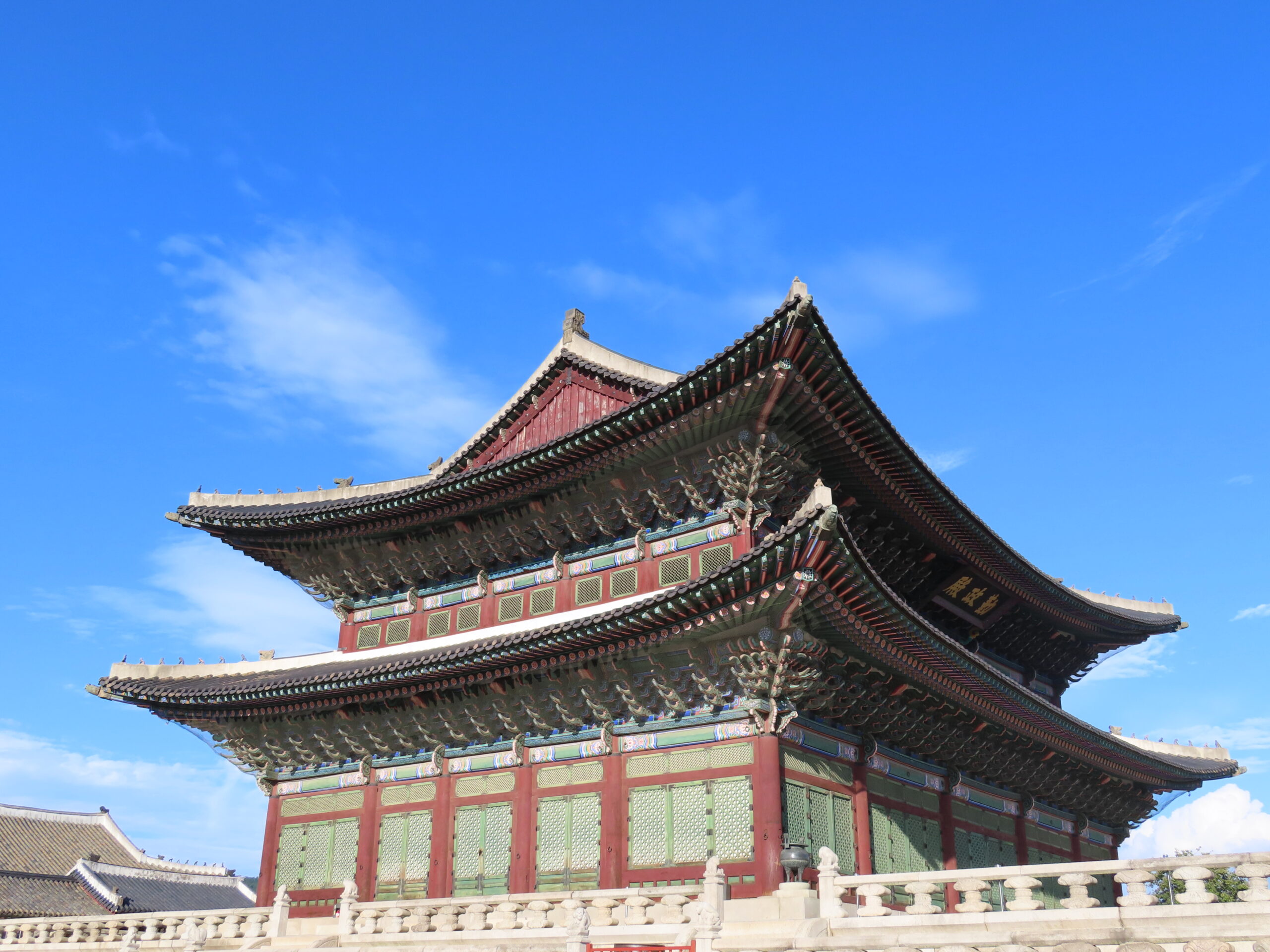
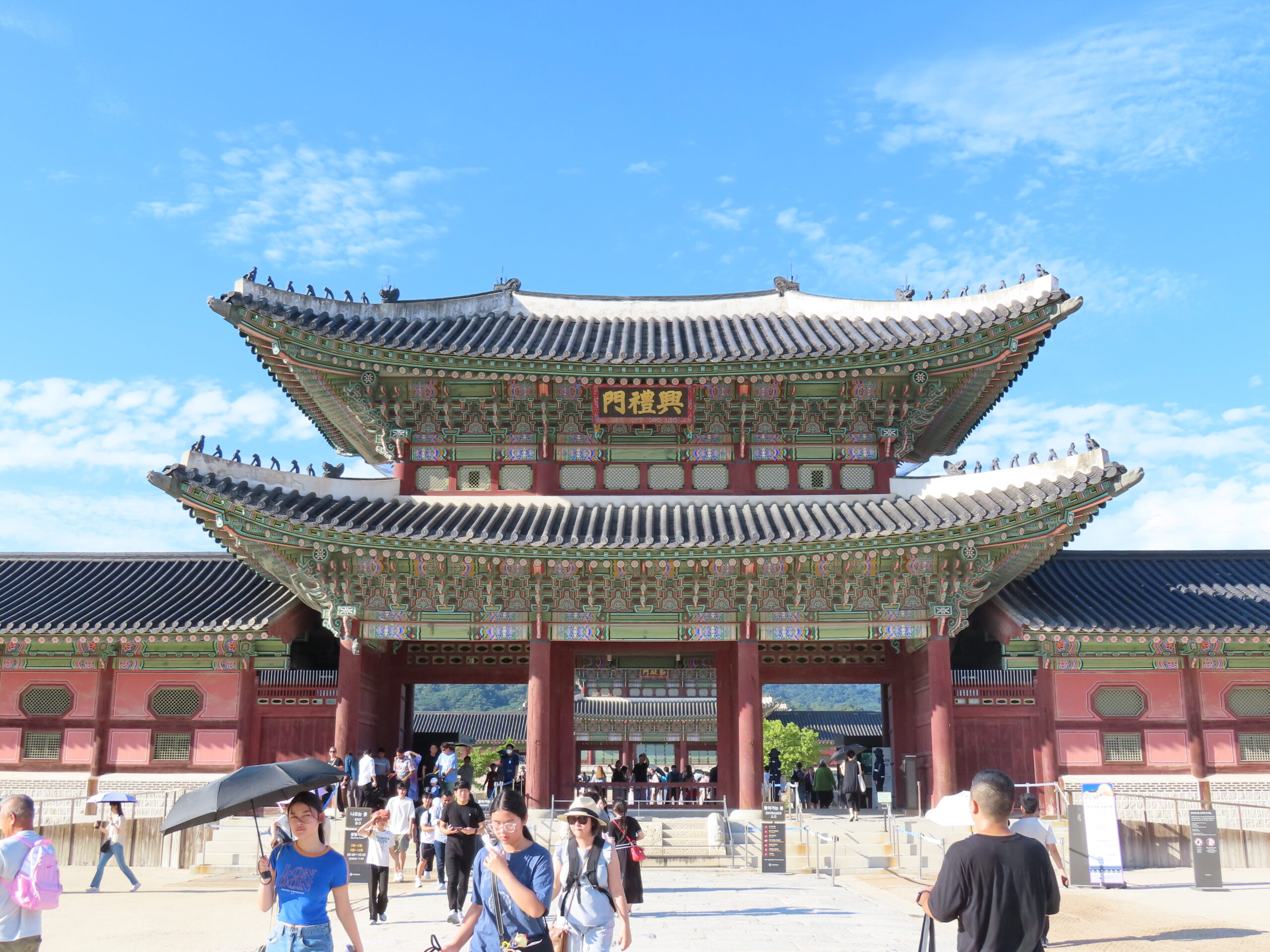
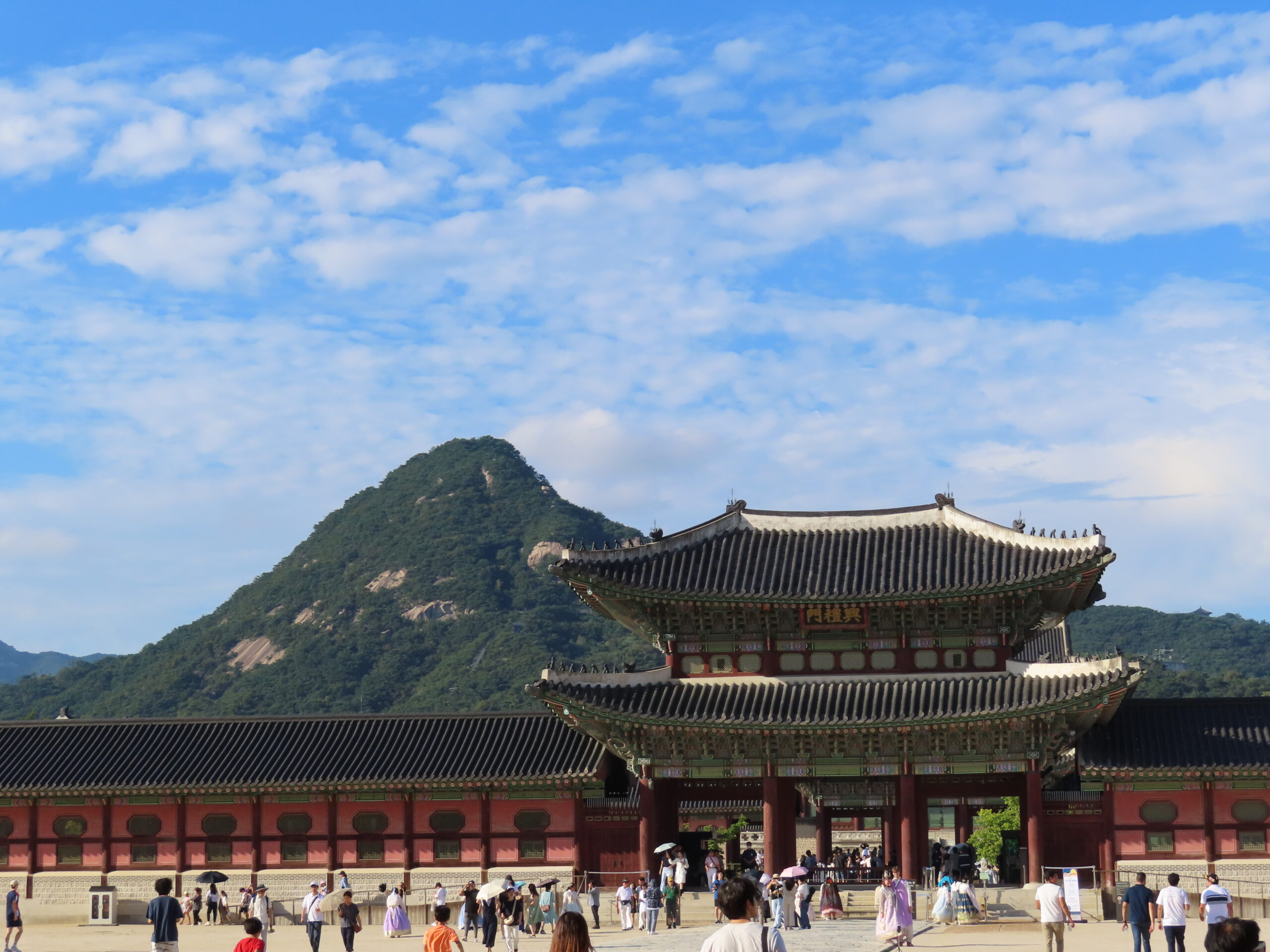
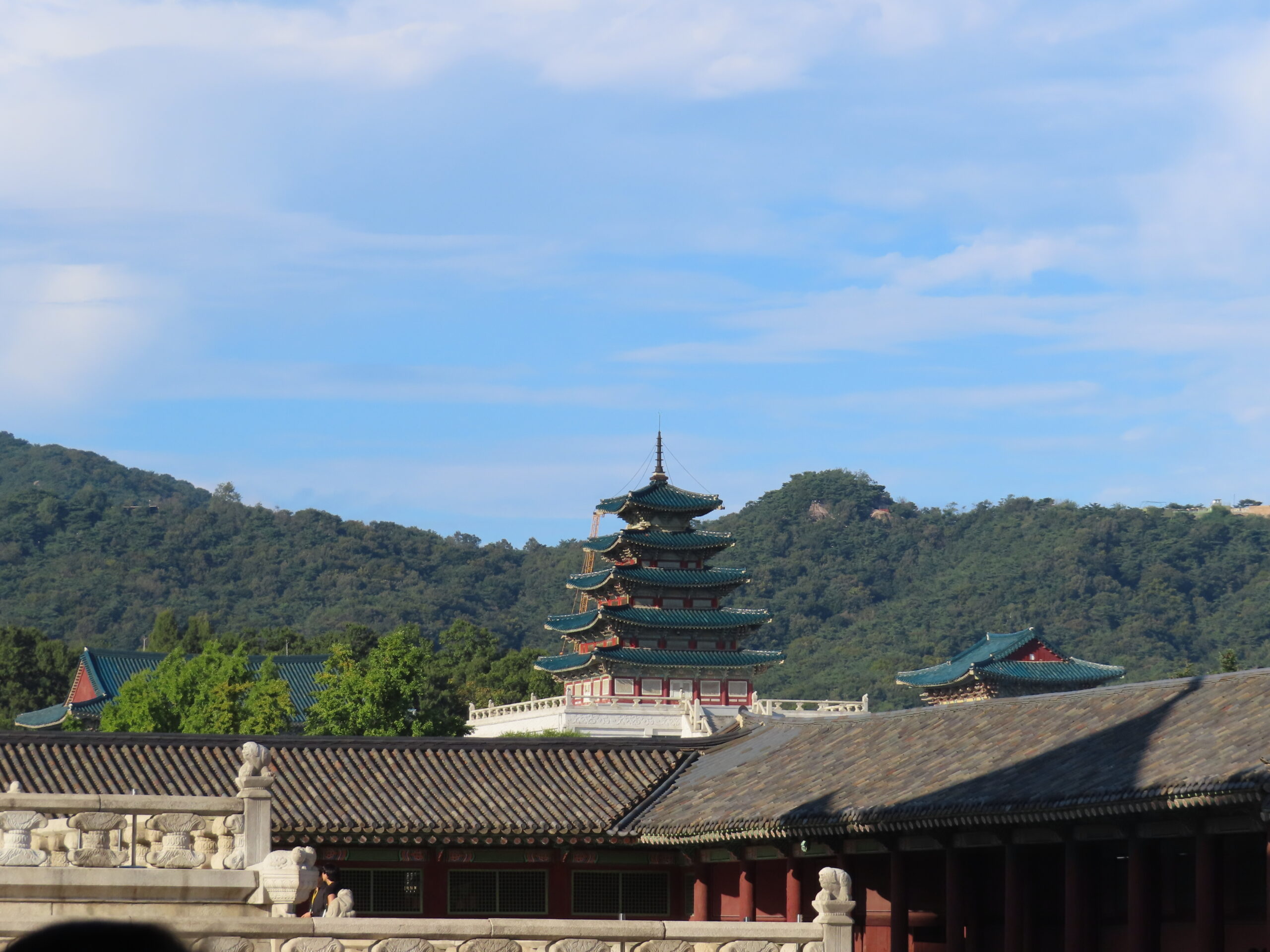
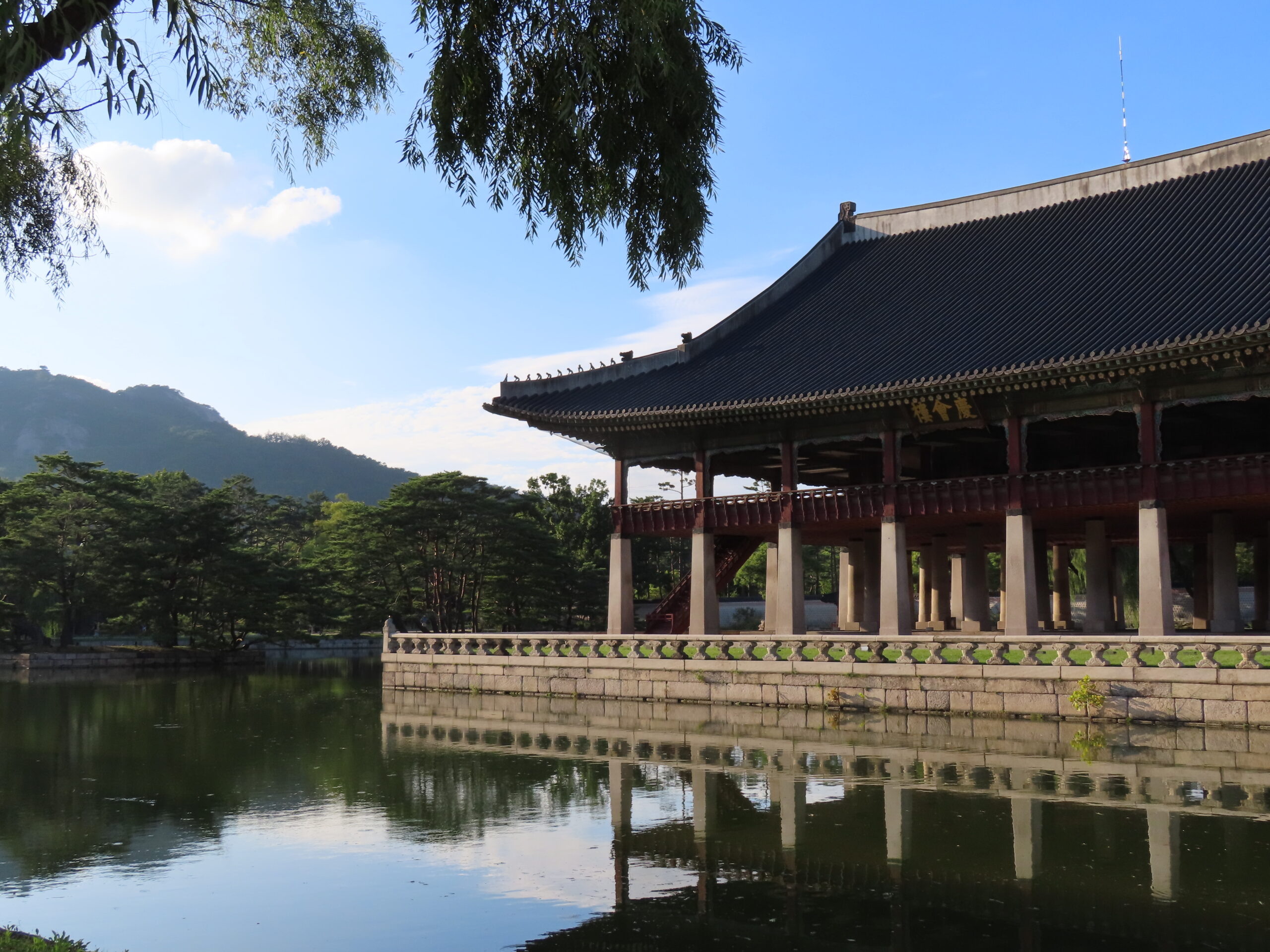
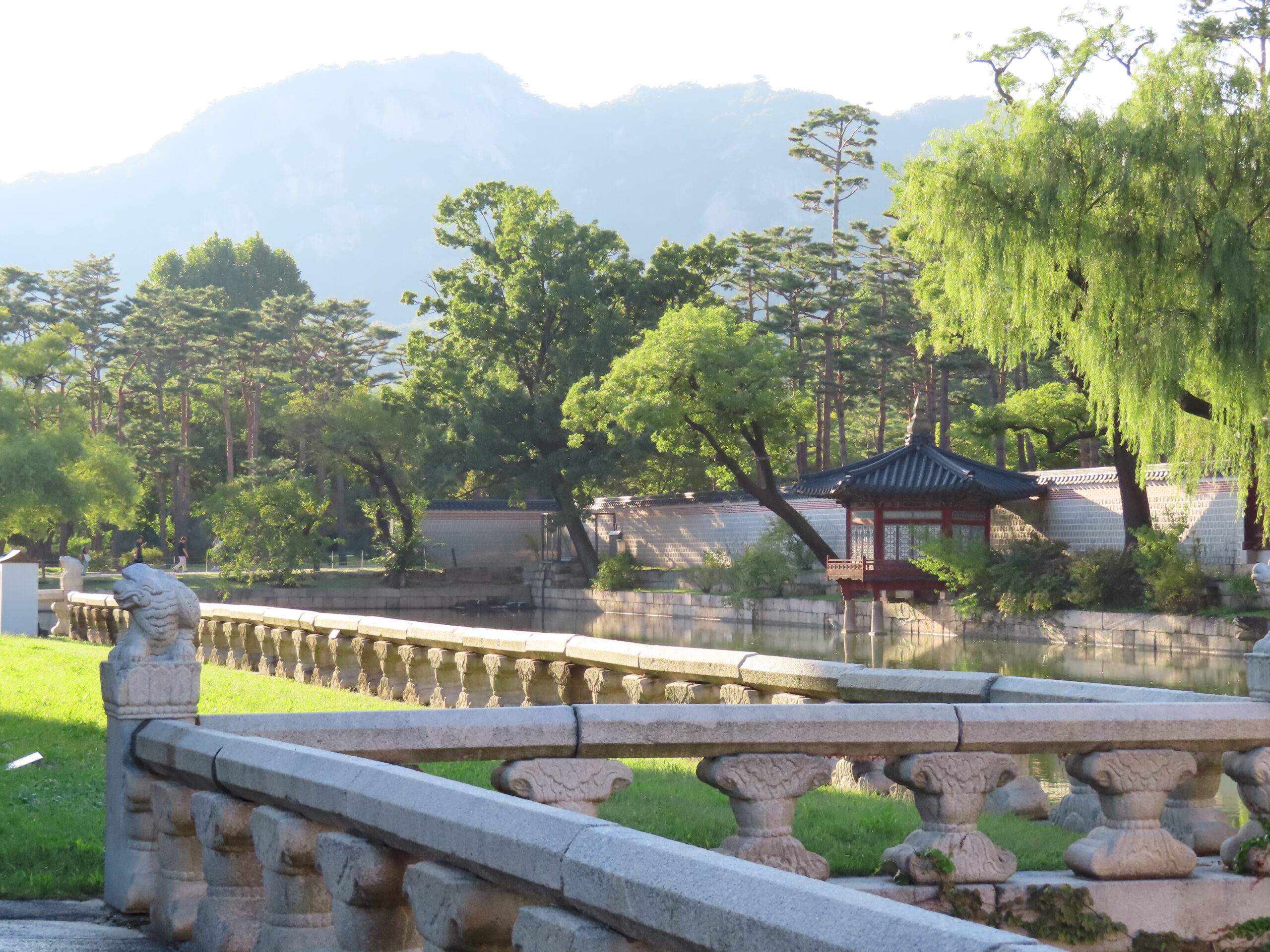
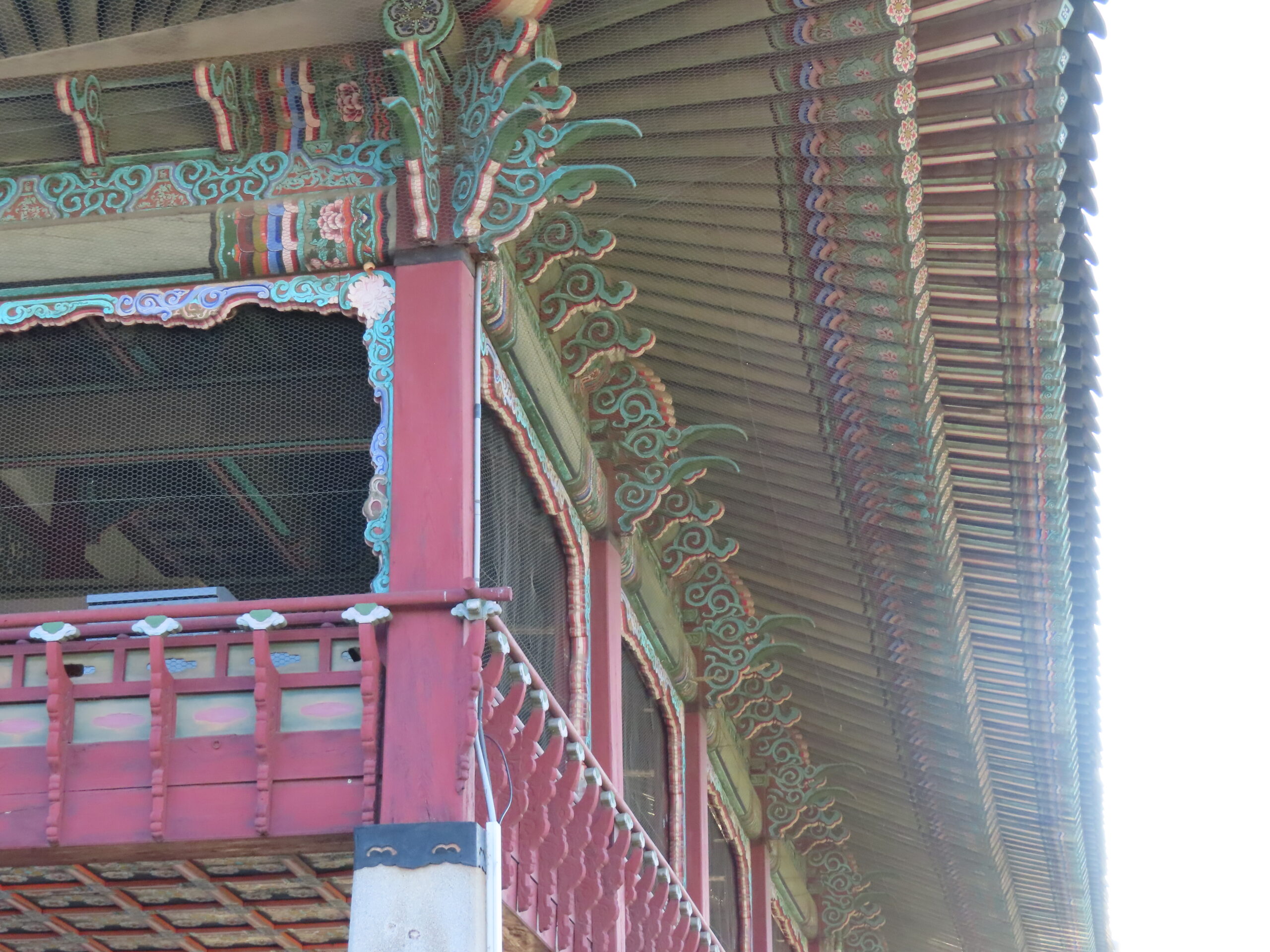
You seem to have acclimated easily!
I enjoyed reading this a while ago, but didn’t know there was away to comment!
We returned from our trip to Italy and have been catching up on our sleep💤💤
Missing you, but I can hear your voice in your blog,
Keep having fun while doing interesting and unusual things!